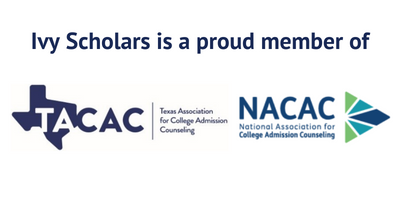As college grows ever more competitive for admissions, students look for any possible leg up. Applying Early Decision is one commonly tried tactic, as we’ve explored before. Early Decision II (ED II) is offered by a limited but slowly expanding number of schools, and students who encounter it often wonder how it compares to ED programs generally; does it offer the same kind of boost, or any boost at all?
In this article, we’re going to look into that, exploring what data we do have, what data we don’t, and what we can infer based on what we know of admissions practices. Each college handles things differently, true, but the same forces act on all of them, and some trends can be found. Let’s get started!
Early Decision II Acceptance Rates
The biggest problem we run into with this is that our primary source for admissions data is the Common Data Set, a suite of data released by almost all colleges, which includes a granular breakdown of admissions data. Now, not all colleges complete this fully, and some already omit their ED statistics. The Common Data Set, however, entirely lacks a way to report or differentiate ED II acceptances, thus rendering it unhelpful for this endeavor.
This leaves us with only the data colleges release themselves, which is often scant. Colleges tend to be reticent to release too much about admissions data, or to let the process become too transparent. We will provide all of the data we have been able to gather here:
| College | ED Acceptance Rate | ED II Acceptance Rate |
| Boston University | 33.9% | 15.9% |
| Carleton College | 31.8% | 71.2% |
| Emory | 26% | 11% |
| Grinnell College | 48% | 18% |
| Johns Hopkins | 20.5% | 10.6% |
| Vanderbilt | 24% | 11% |
This is an incredibly limited data set; most of the information comes from college newspapers. While all of this data is from the past five years, it is all single snapshots, and not all from the same year. Indeed, while colleges usually play things close to the chest, they are incredibly reluctant to let any information about ED II admissions loose specifically.
What Does This Data Tell Us?
The first, and most notable thing, is that ED II, in general, is significantly less advantageous than ED I. The one exception was a single year at Carleton College, but that seems to be due to how they count Questbridge applicants, which we will delve more into later.
Overall, applying ED II is slightly more advantageous than applying in the regular decision pool, but significantly less beneficial than applying ED I. This is especially true when the pools are separated; when ED stats are reported, schools combine ED and ED II applicants and acceptances; separating them out again shows the truth of how admissions functions.
The question that then arises is: why? After all, what is the real difference between applying ED and ED II; you sign the same agreements, make the same promise to attend, get the results back in the same short time span, so why does the first advantage you far more than the second?
Admission Percentages
In general, colleges look to admit a little over half of their incoming class through the early rounds of admissions. There are exceptions; Tulane, for instance, admits nearly three quarters of each incoming class in the early rounds. Overall though, 50%, or a bit over, is most common.
Within early rounds, however, more students are admitted through ED than ED II. As a hypothetical, a college is looking to admit 1,000 students total in the early rounds. As they go through the ED applications, they find 700 that look promising, and so offer them admissions. This then leaves only 300 seats for students who apply ED II, regardless of how many actually do. And if they don’t like the ED II applicants? Well there’s a whole pool of RD applicants right there to take up the slack.
The Questbridge Question
We’ve covered Questbridge before; it’s an alternate application pathway and scholarship opportunity for students with high demonstrated need, and is one we recommend they pursue. It also, kind of, is an early application.
The due date for Questbridge is around that of the ED deadline for most schools, and so these applicants tend to get lumped into the ED pool for reporting purposes, though they are separate. We are fairly certain that reporting discrepancies here is what led to Carleton’s irregular admissions portfolio above, though there’s no way to ascertain that for certain.
As Questbridge applicants are counted as ED applicants, they also cut into the pool of available seats for ED II students. Now, not all schools who offer ED II admissions partake in Questbridge, but a significant number do.
Should You Apply ED II?
So ED II is not nearly as impactful as applying Early Decision alone, but is still generally more likely to succeed than applying regular decision (though perhaps not by as much as you would like). This must then be weighed against the drawbacks of the system, that it locks you into attending the school if you are admitted.
ED II is then the best option if you have a clear second choice school, one you would want to attend above all others if your first choice school turns you down. It is when you don’t have such a school that things get more complicated.
Early Decision is something of a silver bullet for admissions; you only get one, but it greatly improves your chances of getting accepted to one of these schools. ED II is not quite a second shot at this, the odds are far lower, though still usually above the odds you face in the regular decision pool. You do have a tradeoff though; almost all colleges offer Early Decision, the number who offer ED II is significantly lower.
Thus even if you want to apply ED II for strategic reasons, you may not have a chance to for your second choice school. In these circumstances, you need to weigh your choices carefully; if you apply to your second choice school RD and Vanderbilt ED II, and both let you in, then you are locked out from attending your top choice school. Alternatively, you may apply RD to both, and then not get in; these are the risks you need to weigh when choosing where and how to apply.
The only way for this to become easier on students is if colleges begin actually sharing their disaggregated admissions data. Unless students can fully understand the odds they are facing, then there is no way for them to make informed decisions, leaving them to navigate in the dark. We can make some assumptions based on the data we do have, but as we can see in that table, the amount of data we have is limited.
As with so much else in college admissions, colleges really hold all of the cards information-wise. We hope that this article has given you insight into what we do know, but even when colleges release some information, they are sparing with it.
Final Thoughts
Early Decision II is a limited but increasingly popular method employed by top colleges and universities to draw in more talented students. While the actual data on how good this is for students is limited, it does offer them a slight leg up in the admissions process, in at least some specific circumstances. We hope this article has given you full insight into this process, and how it can work for you.
College applications are complicated, especially when there’s such an information gap between what colleges know and what information they release to students. We work hard to narrow that gap, and to give deep insights to the students who work with us. If you are looking for advice on whether or not you should apply ED II, or any other advice on how best to approach your application strategy, then Ivy Scholars can help. Schedule a free consultation with us today to learn how we can help; we’re always happy to hear from you.








